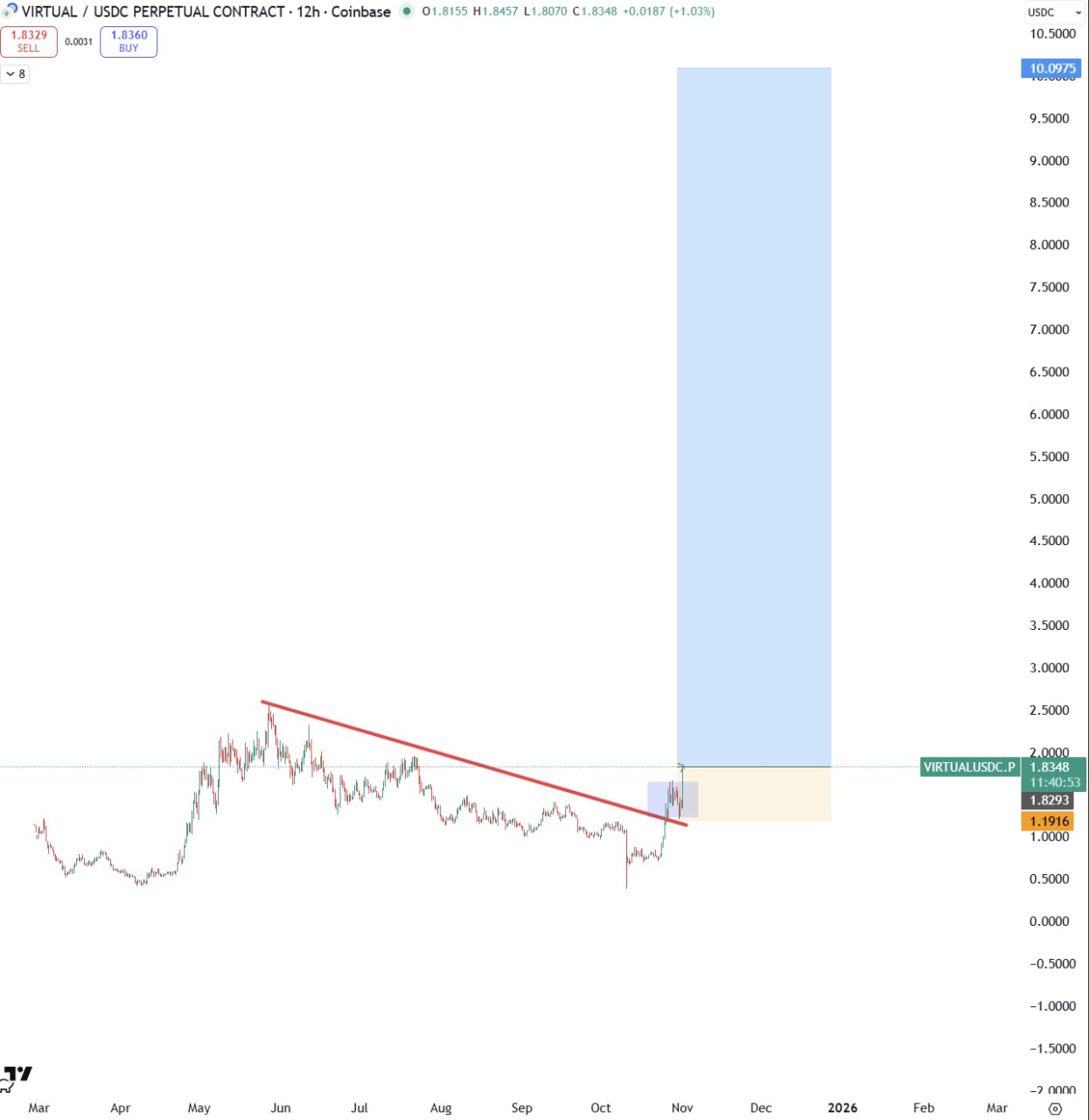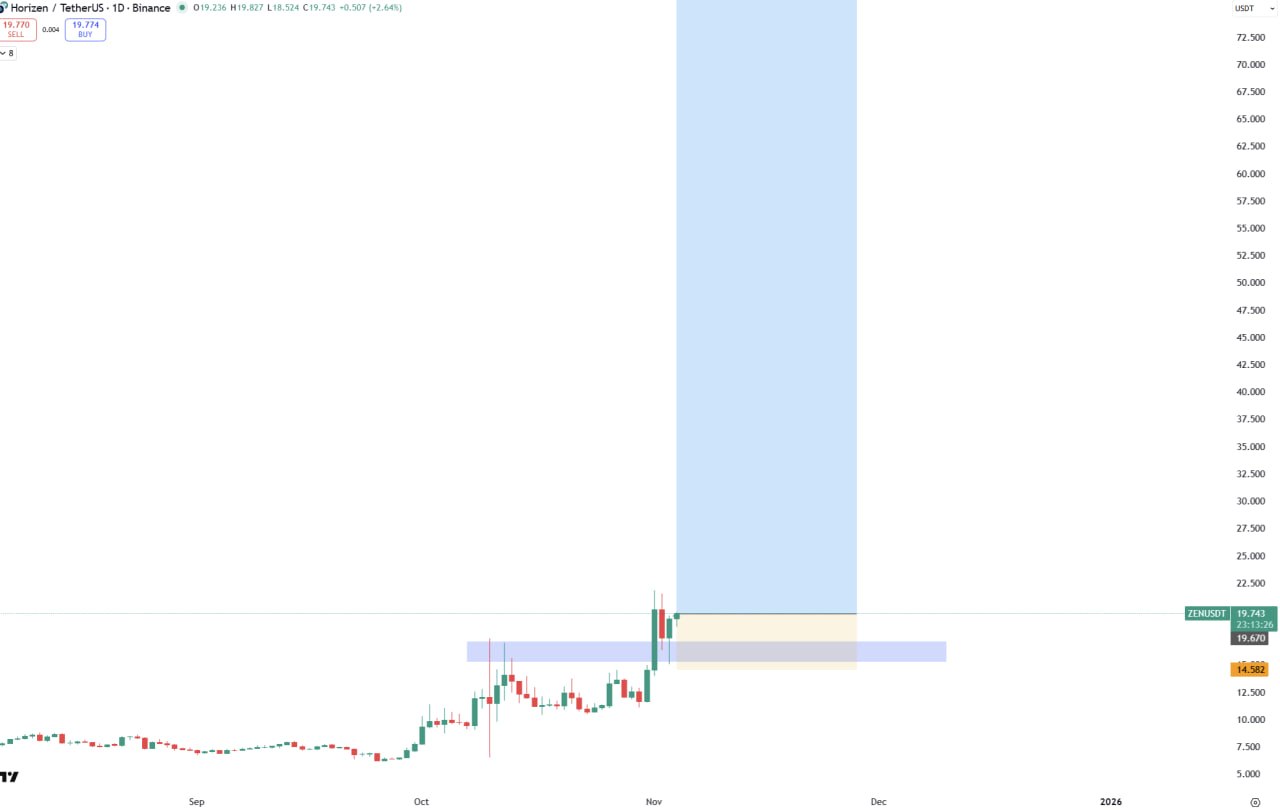VIRTUAL/USDT.P — Long
2025-10-31 07:21
Long VIRTUAL around 1.65 with targets at 1.70 | 1.74 | 1.86; invalidate below 1.1916.

If the TradingView symbol is unavailable, use the annotated image as reference for target zones & invalidation.
VIRTUAL/USDT.P Long Trade Signal — October 31, 2025
This setup seeks to capitalize on an emerging up-leg in VIRTUAL, entering near 1.65 with staged exits at 1.70, 1.74, and 1.86. The stoploss anchors at 1.1916, below the prior capitulation low, to make invalidation unambiguous. VIRTUAL often behaves like a gaming/metaverse proxy: flows cluster around announcements, active user milestones, and ecosystem integrations. Rather than speculate on narratives, this plan focuses on structure, liquidity, and execution mechanics.
Market Context
Within the broader altcoin complex, capital has rotated into segments with visible user funnels—gaming, social, and creator economies. That rotation manifests in VIRTUAL through periodic volume bursts followed by orderly consolidations. During the latest consolidation, dips have been met with absorption rather than cascading offers, indicating that inventories shifted to stronger hands.
Macro volatility remains a wildcard, but VIRTUAL has shown capacity to outperform on idiosyncratic catalysts. Even so, its liquidity can thin quickly outside peak hours, creating slippage risks. The strategy therefore prefers building positions when spreads are tight and depth is sufficient, then letting the plan work with minimal interference. Remember: in event-driven tokens, risk management is the edge; the story merely explains it after the fact.
Technical Analysis
Trend & Structure: On the daily, VIRTUAL is attempting to exit a multi-month range with a series of higher lows since the 1.20s. The 4H shows a well-defined range break above ~1.62 with acceptance and subsequent retests holding. Each retest printed diminishing downside follow-through, a constructive sign that supply has been absorbed near the breakout shelf.
- Momentum: Momentum is building as volatility compresses between impulses; look for a clean push through 1.70 on increasing volume to validate continuation.
- Volume: The last expansion leg printed volume above the 20-session average; consolidation volume has declined, fitting the “impulse then rest” motif of healthy trends.
- Liquidity: Depth is adequate during primary trading sessions; thin during off-hours—size accordingly.
Key Levels
- Entry: 1.65 (tolerance 1.642–1.658 to allow for spread)
- Targets: 1.70 → 1.74 → 1.86
- Stoploss: 1.1916 (beneath capitulation low; if touched on a closing basis, thesis is invalid)
- Support: 1.62 (breakout shelf), 1.56 (secondary), 1.48 (deep support)
- Resistance: 1.70–1.72 (near-term), 1.84–1.88 (swing resistance), 1.95–2.00 (psychological)
Execution Roadmap
- Allow price to stabilize above 1.62 and confirm with a 1H close before sizing in near 1.65.
- Partial at 1.70 to derisk; if 1.70 converts to support, advance the stop to just under the most recent 1H higher low.
- At 1.74, take a second tranche; if momentum remains, let the runner seek 1.86 where resting offers commonly cluster.
- Into 1.86, evaluate the tape: if breadth is strong and volume is expanding, you may retain a small runner; otherwise, complete the exit per plan.
Signals of Failure
Persistent closes back inside the prior range (sub-1.62) and lower highs on the 4H indicate a failed breakout; if that develops in tandem with rising open interest and negative delta, flatten and wait for a fresh base. A breakdown toward 1.48 would reset the chart entirely; do not average into that path.
Risk Management
Because VIRTUAL can gap on headlines, risk tightly and assume slippage is possible. Keep per-trade risk modest. If the first target pays, shift from a capital-at-risk to a house-money mindset by moving stops higher in line with structure. Use alerts to avoid staring at the tape; over-management typically degrades execution.
- Size based on the distance to the stop, not on conviction. Conviction doesn’t pay margin calls; math does.
- Avoid adding into resistance; add only after pullbacks that respect higher-low structure.
- Respect your daily loss limit; if hit, stand down to protect psychological capital.
- Document reasons for entry/exit; post-trade review is how you convert one setup into an edge.
All information herein is for educational purposes. No financial advice is given. Trading derivatives involves substantial risk. Manage size, use stops, and accept that outcomes are probabilistic.








